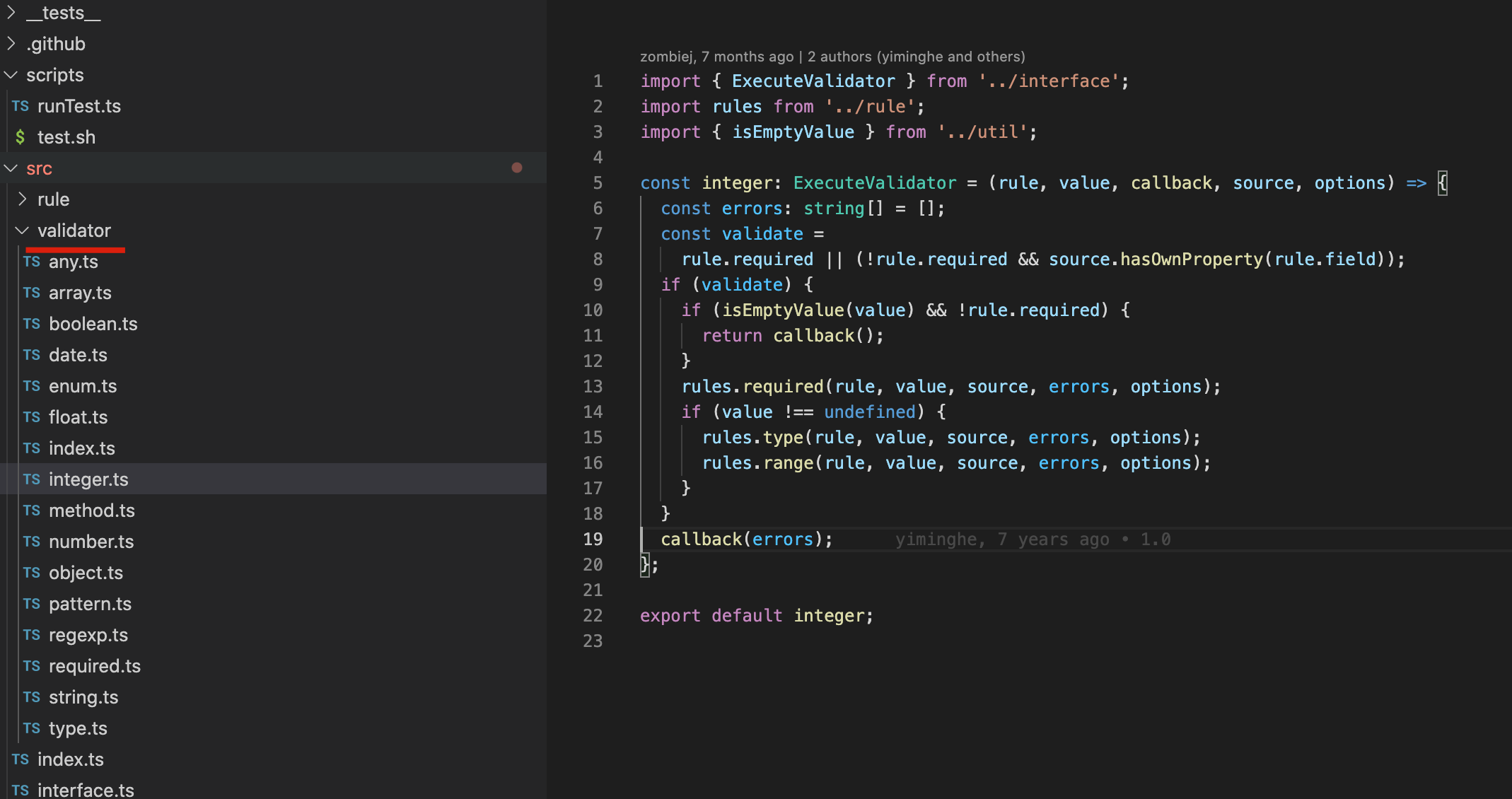代码也写了几年了,设计模式处于看了忘,忘了看的状态,最近对设计模式有了点感觉,索性就再学习总结下吧。
大部分讲设计模式的文章都是使用的 Java、C++ 这样的以类为基础的静态类型语言,作为前端开发者,js 这门基于原型的动态语言,函数成为了一等公民,在实现一些设计模式上稍显不同,甚至简单到不像使用了设计模式,有时候也会产生些困惑。
下面按照「场景」-「设计模式定义」- 「优化代码」- 「更多场景」-「总」的顺序来总结一下,如有不当之处,欢迎交流讨论。
# 场景
进入一个营销活动页面,会根据后端下发的不同 type ,前端页面展示不同的弹窗。
async getMainData() {
try {
const res = await activityQuery(); // 请求后端数据
this.styleType = res.styleType;
if (this.styleType === STYLE_TYPE.Reward) {
this.openMoneyPop();
}else if (this.styleType === STYLE_TYPE.Waitreward) {
this.openShareMoneyPop();
} else if (this.styleType === STYLE_TYPE.Poster) {
this.openPosterPop();
} else if (this.styleType === STYLE_TYPE.Activity) {
this.openActivityPop();
} else if (this.styleType === STYLE_TYPE.Balance) {
this.openBalancePop();
} else if (this?.styleType === STYLE_TYPE.Cash) {
this.openCashBalancePop();
}
} catch (error) {
log.error(MODULENAME, '主接口异常', JSON.stringify(error));
}
}
这个代码的话看了就想打人,未来新增一种弹窗类型的话,我们需要到 getMainData 内部去补一个 else if,一不小心可能就会影响到原有的逻辑,并且随着迭代函数会越来越大。但其实每种弹窗是相互独立的,我们并不关心其他弹窗的逻辑。
此时,就需要策略模式了。
# 策略模式
看下 维基百科 (opens new window) 的定义。
策略模式作为一种软件设计模式 (opens new window),指对象有某个行为,但是在不同的场景中,该行为有不同的实现算法。比如每个人都要“交个人所得税”,但是“在中国交个人所得税”和“在美国交个人所得税”就有不同的算税方法。
策略模式:
- 定义了一族算法(业务规则);
- 封装了每个算法;
- 这族的算法可互换代替(interchangeable)。
看一下如果是 Java 语言会怎么实现:
//StrategyExample test application
class StrategyExample {
public static void main(String[] args) {
Context context;
// Three contexts following different strategies
context = new Context(new FirstStrategy());
context.execute();
context = new Context(new SecondStrategy());
context.execute();
context = new Context(new ThirdStrategy());
context.execute();
}
}
// The classes that implement a concrete strategy should implement this
// The context class uses this to call the concrete strategy
interface Strategy {
void execute();
}
// Implements the algorithm using the strategy interface
class FirstStrategy implements Strategy {
public void execute() {
System.out.println("Called FirstStrategy.execute()");
}
}
class SecondStrategy implements Strategy {
public void execute() {
System.out.println("Called SecondStrategy.execute()");
}
}
class ThirdStrategy implements Strategy {
public void execute() {
System.out.println("Called ThirdStrategy.execute()");
}
}
// Configured with a ConcreteStrategy object and maintains a reference to a Strategy object
class Context {
Strategy strategy;
// Constructor
public Context(Strategy strategy) {
this.strategy = strategy;
}
public void execute() {
this.strategy.execute();
}
}
主要是利用到类的多态,根据传入 Context 中不同的 strategy,来执行不同的 execute()。如果未来有新增算法的话,只需要新增一个类即可。
那如果是 js 呢?众所周知,ES6 之前 js 是没有 class 关键字的,即使现在有了,也依然只是基于原型的语法糖,底层和 java 的类是完全不同的。
此外,js 中函数是一等公民,可以当作参数传入和返回,因此实现策略模式我们完全不需要去定一个类,然后通过生成的对象调用方法。在 js 中我们只需要将函数传入即可。
const strategies = {
FirstStrategy() {
console.log("Called FirstStrategy");
},
SecondStrategy() {
console.log("Called SecondStrategy");
},
ThirdStrategy() {
console.log("Called ThirdStrategy");
}
}
const execute = (strategy) => {
return strategies[strategy]();
}
execute('FirstStrategy')
execute('SecondStrategy')
execute('ThirdStrategy')
上边主要演示了思想,实际开发中,我们完全可以把每种策略分文件单独写然后再 import。
相对于 java,写法简单了很多,我们不需要定义各个类,只需要用一个对象来存储所有策略,再提供一个调用策略的函数,甚至这个函数也可以直接省略。
# 优化代码
将所有弹窗方法从业务代码 getMainData 中抽离出来,只暴露一个打开弹窗的函数供业务调用。
import { openPop } from './popTypes';
async getMainData() {
try {
const res = await activityQuery(); // 请求后端数据
openPop(res.styleType)
} catch (error) {
log.error(MODULENAME, '主接口异常', JSON.stringify(error));
}
}
然后就是 popTypes.js 文件。
import { SHARETYPE } from './constant';
const popTypes = {
[STYLE_TYPE.Reward]: function() {
...
},
[STYLE_TYPE.Waitreward]: function() {
...
},
[STYLE_TYPE.Poster]: function() {
...
},
[STYLE_TYPE.Activity]: function() {
...
},
[STYLE_TYPE.Balance]: function() {
...
},
[STYLE_TYPE.Cash]: function() {
...
},
}
export function openPop(type){
return popTypes[type]();
}
# 更多场景
表单验证也是一个典型场景,常用的,我们需要验证用户输入字段是否是数字、是否必填、是否是数组,还有自定义的一些验证,同样可以通过策略模式实现,从而使得代码更易维护和扩展。
如果使用过 Element UI,对下边表单的 rule 一定很熟悉。
const rule = {
name: {
type: 'string',
required: true,
message: '请输入名字'
},
age: [
{
type: 'number',
message: '请输入number',
},
{
message: '年龄必须大于 18',
validator: (rule, value) => value > 18,
},
]
};
Element 会帮助我们校验 name 是否是 string、age 是否是 number。而 Element 其实是用的一个开源的 async-validator (opens new window) 校验库。
async-validator (opens new window) 内部会内置很多 type 的 validator,然后会根据 rule 中的 type 来帮我们填充相应的 validator。让我们看一下相应的源码。
首先是 validator 文件夹,会定义很多校验规则,date 类型、number 类型等等,相当于很多策略。

然后是上边截图中的 validator/index.ts 文件,将这些策略导出。
import string from './string';
import method from './method';
import number from './number';
import boolean from './boolean';
import regexp from './regexp';
import integer from './integer';
import float from './float';
import array from './array';
import object from './object';
import enumValidator from './enum';
import pattern from './pattern';
import date from './date';
import required from './required';
import type from './type';
import any from './any';
export default {
string,
method,
number,
boolean,
regexp,
integer,
float,
array,
object,
enum: enumValidator,
pattern,
date,
url: type,
hex: type,
email: type,
required,
any,
};
校验前会执行下边的代码,通过 type 填充相应的 validator。
arr.forEach(r => {
...
if (typeof rule === 'function') {
rule = {
validator: rule,
};
} else {
rule = { ...rule };
}
// Fill validator. Skip if nothing need to validate
rule.validator = this.getValidationMethod(rule); // 策略模式应用
if (!rule.validator) {
return;
}
...
});
});
策略模式的体现就是 getValidationMethod 方法了,让我们看一下实现。
import validators from './validator/index'; // 导入所有策略
getValidationMethod(rule: InternalRuleItem) {
// 已经有了就直接返回 validator
if (typeof rule.validator === 'function') {
return rule.validator;
}
...
// 通过 type 得到相应的 validator。
return validators[this.getType(rule)] || undefined;
}
getType(rule: InternalRuleItem) {
...
return rule.type || 'string';
}
填充相应的 validator 之后接下来只需要遍历相应的 rule 然后校验就可以了。
# 总
当出现很多 if else 或者 switch 的时候,我们就可以考虑是否能使用策略模式了。
通过策略模式,我们可以把策略从业务代码中抽离出来,未来扩展的话无需深入到业务代码修改,只需要新增需要的策略,不会使得业务代码变得越来越臃肿。
甚至策略模式也可以更好的进行复用,如果其他业务场景需要类似的策略,直接引入即可,和原有的业务相互独立。